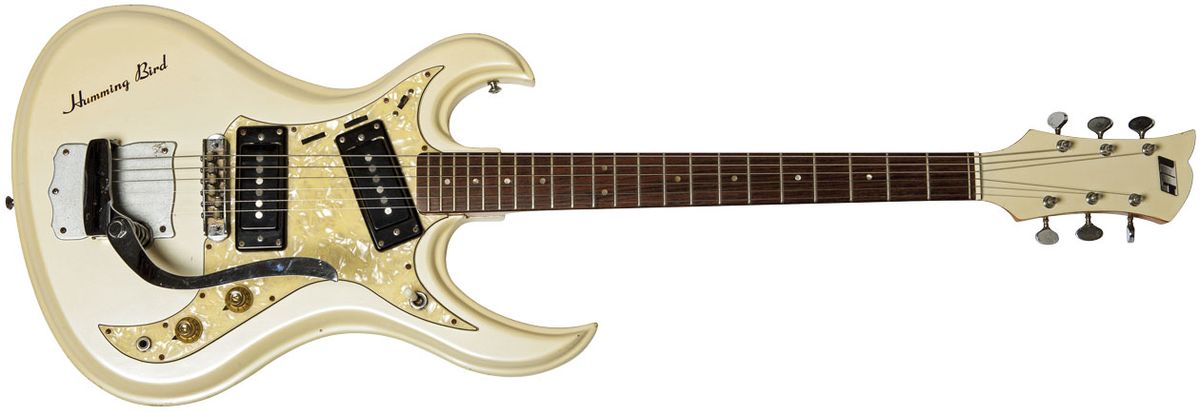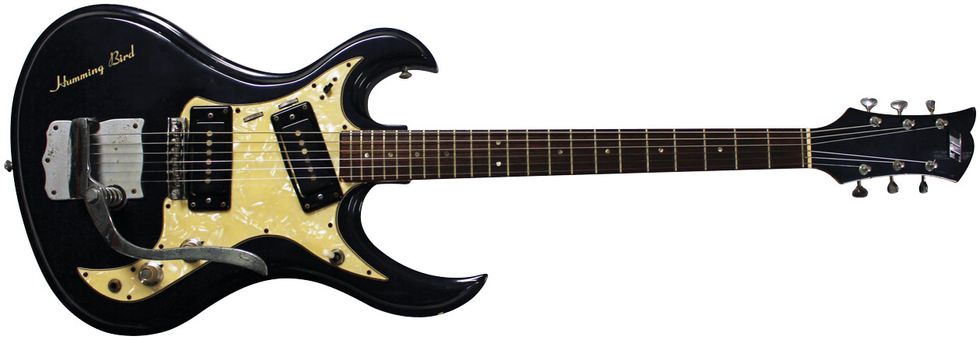What happens when a Mosrite Ventures model makes its way to Japan? You can bet it’s something extreme.
When someone says “guitar,” what’s the image that pops into your head? Put another way, what’s the dictionary definition of a guitar for you? Maybe it’s a blackguard Tele, or a Les Paul burst, or a white Strat? Well, for Japanese guitar players in the 1960s, it was a Mosrite Ventures model. I cannot express the profound impact the Ventures made on the Japanese youth of that time. The Ventures were so American cool, and because they played instrumental music, the songs were accessible to Japanese sensibilities. Above all, players wanted those guitars!
But finding a Mosrite guitar in Japan was next to impossible. American guitars were prohibitively expensive in the Land of the Rising Sun, and even the more available Fenders cost about a month’s salary for a well-to-do family. So for many Japanese guitarists, the Mosrite dream remained simply that. Then, in 1965, some Japanese musical instrument companies began to attend NAMM. One of these company owners was Eddie Wakayama. Eddie san owned the Mitsuya electronics company, which supplied pickups and other electronic parts to guitar manufacturers. He knew the demand for Mosrite guitars and decided to purchase one from Semie Moseley himself at the NAMM show. This solitary Mosrite Ventures model made its way back to Japan and word got around quickly. Companies and designers from all over the country made requests to study this amazing guitar.
Some of the first designers to inspect this magical instrument were from Tokai, a wonderful family-owned business that has always produced high-quality instruments. Masahiro Matsui and another designer from Tokai travelled to Tokyo to study this Mosrite with the intention of exploring its subtleties. But in the old Japanese way, Masahiro strove to be inspired from an artistic standpoint—to make a more “extreme” version of the Ventures model. And man, did he succeed!
In 1967, Tokai joined the electric-guitar frenzy with three distinct guitar models, all designed by Masahiro and Tokai. The flagship of the short-lived electric guitar line was the Tokai 200S, otherwise known as the Humming Bird (Photo 1). The Humming Bird featured exaggerated lines, epic styling, and a beautiful presentation that exuded flair and a bit of toughness. At least that’s what I thought when I discovered my first Tokai Humming Bird in the early 1990s. The entire Tokai guitar line was designed exclusively for the Japanese market, so finding one of these guitars in North America was truly special. Tokai only made the 200S for a little over a year before abandoning the slumping electric-guitar market of the late ’60s.
Photo 2
Combining some of the best aspects of the Fender Jaguar, Jazzmaster, and Mosrite Ventures model, the Tokai 200S is a total surf monster. Its pickups were made by Shin-Ei and have a bright, punchy tone with lots of zip and sparkle. The electronics are similar to a Jazzmaster and the neck profile also resembles early ’60s Fenders. The body features a beautiful German carve and overall the guitar balances very well. Tokai only made these guitars in two colors, white and blue, although some of the guitars finished in blue exhibit dark tones, perhaps a few shades away from black (Photo 2).
Fast-forward 50 years: Tokai is now reissuing the original 200S design, and the model will be displayed at the 2018 winter NAMM show in California. Amazingly, the guitar is being made in the same factory where it was built in 1967—with some of the same employees still working there! Tokai remains a family-owned business, and it’s always cool to see these factories chugging away for so many years.
Oh, and that Mosrite that Eddie bought? Well, it was studied and prodded and dissected so many times that it eventually separated into parts and finally faded back into the universe. Eddie never saw it again, but that Mosrite gave it up for the greater good of guitar players in Japan!
Watch the video demo:



